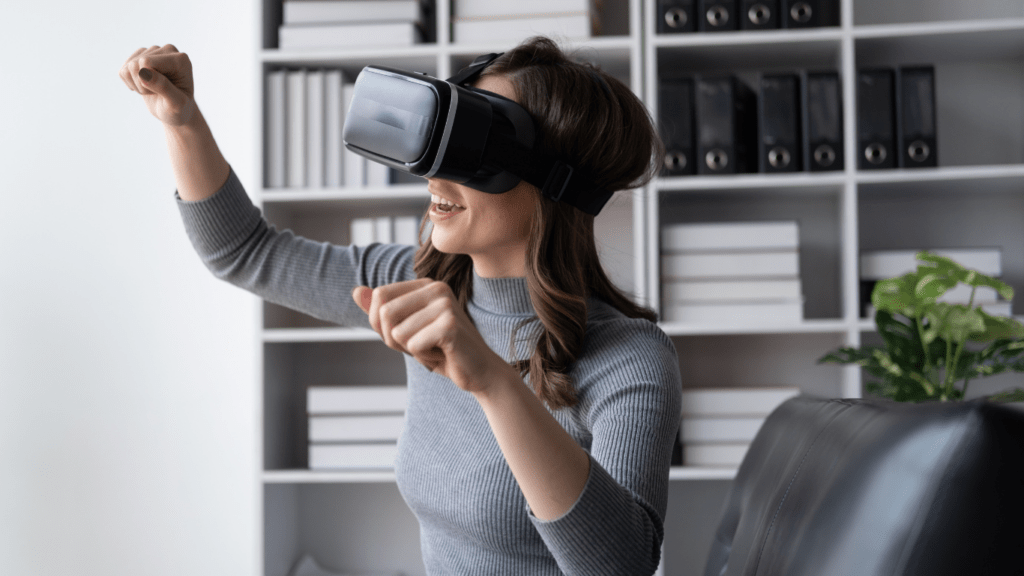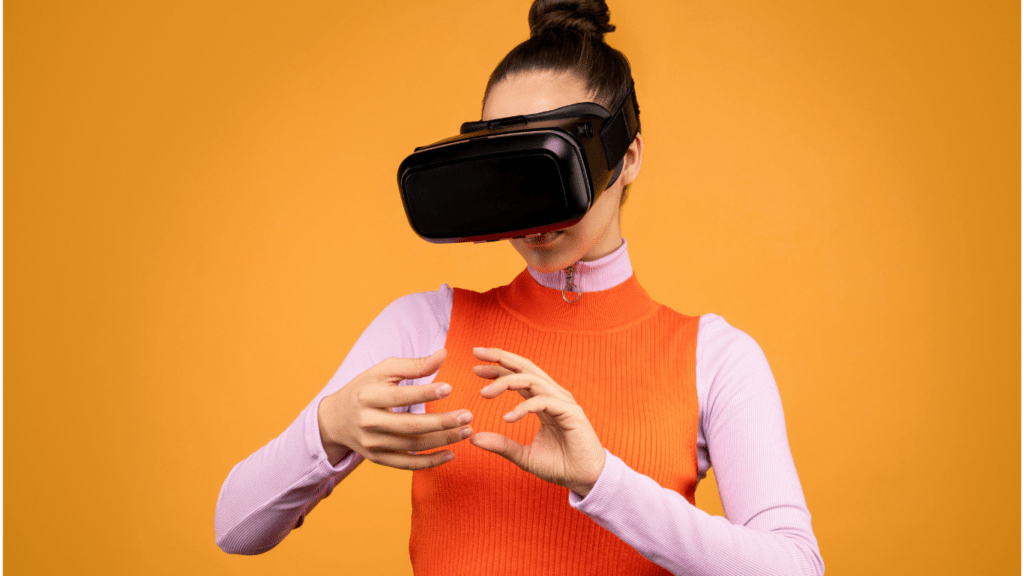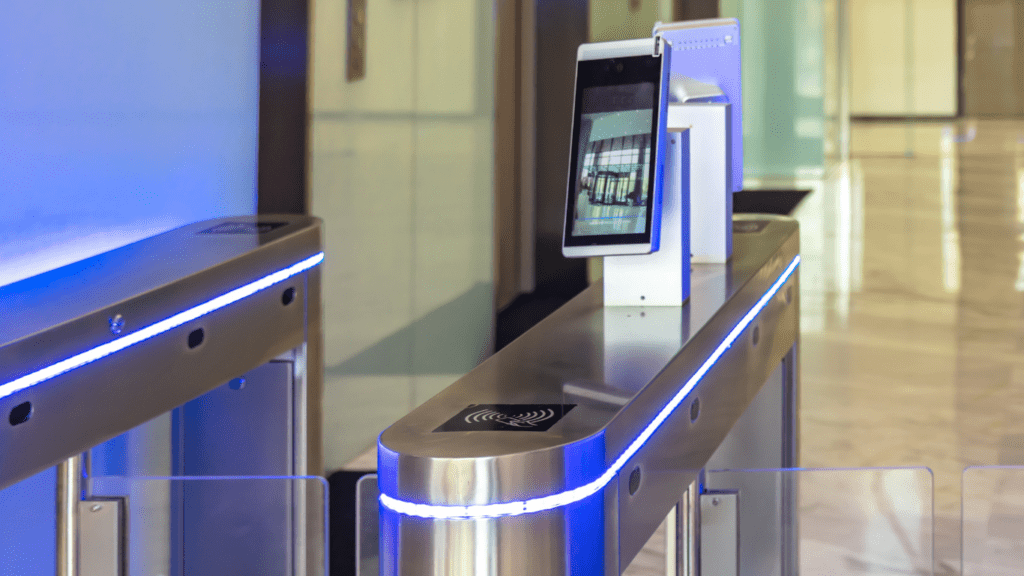Understanding Virtual Reality Casinos
Virtual reality casinos offer a unique way to experience online gambling, bridging the gap between digital and physical casino environments.
What Is a Virtual Reality Casino?
A virtual reality casino is a digital gambling platform using VR technology to create an immersive gaming experience.
Users wear VR headsets to enter a 3D environment mimicking real-world casinos. Players can interact with games, dealers, and other participants as if they were physically present.
Companies like:
- Oculus
- HTC Vive
produce sophisticated VR gaming systems that make this possible.
How Virtual Reality Technology Integrates With Gambling
VR technology integrates with gambling through several key components.
The first is VR headsets, which provide 360-degree views and spatial audio, enhancing realism.
Next, motion tracking enables users to interact naturally with the virtual environment, such as picking up cards or throwing dice.
High-quality graphic rendering ensures that casino games have realistic textures and lifelike movements.
Platforms like Unity and Unreal Engine support these detailed graphics.
Lastly, online casino software adapts to VR, offering games like poker, blackjack, and slots in a fully immersive format.
The Benefits of Virtual Reality Casinos
Virtual reality casinos offer unique benefits by leveraging cutting-edge technology. They create an engaging, immersive gambling environment for players.
Enhanced User Experience
VR casinos significantly enhance user experience. They provide a high level of interactivity through 3D avatars and social features.
Players, for instance, can walk around the casino floor, interact with other players, and even join multiplayer games. This interactive aspect closely mimics traditional casinos, fostering a social atmosphere.
VR headsets enable players to engage with virtual dealers and games in real-time.
Various features like customizable avatars and virtual chat rooms enhance personalization, making the gambling experience more engaging.
Additionally, touch controllers and motion tracking enable intuitive navigation and gameplay, reducing the learning curve for new users.
Realism and Immersion
Realism is a key benefit of VR casinos. High-quality graphics and 360-degree views simulate a real casino environment.
With spatial audio, players hear the casino sounds from appropriate directions, deepening immersion.
Advanced motion tracking captures players’ movements, making interactions more natural.
For example, when a player rolls dice or spins a roulette wheel, the VR system replicates these actions with high fidelity
This realism and immersion elevate the overall gambling experience, providing a lifelike and captivating environment that remote and online casinos can’t match.
The use of platforms like Unity and Unreal Engine ensures that VR casinos offer cutting-edge visuals and seamless experiences.
Challenges Facing Virtual Reality Casinos
Despite their promising potential, virtual reality casinos deal with several challenges that could hinder their growth and adoption.
Technological Limitations
VR casinos face substantial technological limitations. High-quality VR headsets such as the Oculus Rift or HTC Vive can be expensive, which may deter widespread adoption.
Moreover, VR experiences demand significant processing power and high-speed internet connections, which aren’t always accessible to every user.
Hardware compatibility issues can also arise as VR technology evolves, creating potential barriers for players with older or less capable devices.
Legal and Regulatory Issues
Legal and regulatory issues also present major obstacles for VR casinos. Different countries have varied gambling laws, with some regions imposing stringent regulations or outright bans on online gambling.
Compliance becomes even more complex with VR, as it introduces new dimensions that existing regulations may not cover.
Moreover, ensuring fair play and preventing fraudulent activities in a fully immersive digital environment pose ongoing challenges for developers and regulators alike.
These challenges demonstrate that while VR casinos hold incredible promise, addressing these barriers is crucial for their future success.
Case Studies: Virtual Reality Casinos in Action

Several VR casinos have made significant impacts by offering unique gambling experiences.
By examining these case studies, I can detail both successful endeavors and what can be learned from less successful attempts.
Successful VR Casino Implementations
- PokerStars VR: This platform has gained traction with its realistic poker games. Users can interact with other players using avatars, creating an immersive social environment.
PokerStars VR incorporates detailed graphics and intuitive controls, enhancing user engagement. - SlotsMillion VR: Known as the first VR casino, SlotsMillion offers a vast selection of slot games in a 3D environment.
Players enjoy a realistic casino floor, complete with slot machines and surrounding ambiance. Its immersive gameplay and wide game selection have attracted a loyal user base.
- VR Casino Games by NetEnt: NetEnt, a major player in the online casino industry, has developed various VR games. These include popular titles like Jack’s World.
The games leverage high-quality graphics and smooth gameplay to ensure a seamless experience for users.
Learning From Less Successful Attempts
- VR Casino by CasinoVR: Despite initial interest, CasinoVR struggled due to its limited game variety and technical issues. Users reported lags and bugs, which detracted from the immersive experience.
Ensuring smooth gameplay and expanding game options could’ve improved retention.
- vTime Games: Though vTime entered the VR casino market with innovative ideas, it faced challenges in user adoption. The lack of high-quality graphics and engaging gameplay led to a decline in popularity.
Investment in better visuals and more interactive elements might have changed its trajectory.
By studying these case studies, I see clear patterns. Successful VR casinos invest in high-quality graphics, diverse game options, and seamless user experiences.
Less successful attempts often falter due to technical glitches, limited content, or insufficient engagement.
The Future Prospects of Virtual Reality Casinos
Virtual reality (VR) casinos showcase immense potential as technology evolves. Future advancements promise to enhance user experiences further and expand market reach.
Innovations on the Horizon
Future VR casinos will likely feature artificial intelligence (AI) integration for personalized gameplay.
I can adapt game difficulty, recommend titles, and analyze betting patterns to offer customized suggestions.
Enhanced haptic feedback and advanced motion tracking could elevate immersion, making virtual interactions more lifelike. Blockchain technology might also provide secure, transparent transactions, ensuring fairness and trust.
Predictions for Market Growth
The VR casino market’s projected growth appears promising. According to Statista, the global VR gaming market is expected to surpass $45 billion by 2027.
The gambling sector will capture a significant portion of this growth. Increased consumer adoption of VR headsets and advancements in 5G technology will drive this trend.
Regulatory advancements and wider acceptance will further bolster market expansion.
Robin Jackson
Robin Jackson is a highly regarded writer at Stakes Smartly Today, with a focus on emerging technologies in the gambling industry. His expertise spans artificial intelligence, virtual reality casinos, wearable technology, and smart contracts. Robin's articles provide in-depth analyses of how these innovations are transforming online gambling, enhancing security, transparency, and user experience.


